#CarbonCredits
Explore tagged Tumblr posts
Text
Free Market Environmentalism: Charting Scotland’s Eco-Friendly Prosperity Path
Understanding Free Market Environmentalism: A Pathway for a Sustainable Scotland Hello, dear readers! In today's edition of "Perspectives Unbound," we explore an intriguing fusion of economic freedom and environmental stewardship—Free Market Environmentalism (FME). As Scotland grapples with environmental challenges, FME presents a perspective that aligns ecological sustainability with the principles of the free market. Central to FME is the belief that market mechanisms, property rights, and the rule of law can effectively address environmental problems. This approach contrasts with traditional regulatory frameworks, arguing that when property rights are clearly defined and enforced, individuals and companies are incentivized to manage natural resources responsibly. In Scotland, where landscapes are not just national treasures but also economic assets, FME could reshape environmental policies by encouraging innovation and stewardship. Imagine the potential of a market-oriented approach to managing Scotland's vast natural resources, from the forestry in the Highlands to the energy reserves beneath the North Sea. One compelling aspect of FME is its emphasis on entrepreneurship in achieving environmental goals. Entrepreneurs can identify inefficiencies and create solutions that reduce waste, conserve energy, and mitigate pollution—all while generating economic value. For instance, Scottish startups could lead advancements in clean energy technologies or sustainable fishing practices, driven by profitability and ecological impact. Moreover, FME advocates for the use of trading schemes, such as carbon credits, which allow the market to set a price on carbon emissions, thereby employing the power of the market to steer industries towards greener alternatives. These schemes could be particularly impactful in Scotland, a country committed to ambitious carbon neutrality goals. However, embracing FME does not imply a laissez-faire approach to environmentalism. It requires active but thoughtful government involvement to create a framework that aligns market incentives with environmental preservation. This includes refining property rights, enhancing market transparency, and reducing subsidies that harm the environment. As we consider the potential of free market environmentalism, let us invite a broad spectrum of opinions and rigorous debate on how best to balance market mechanisms with environmental preservation. The goal is not only a wealthier Scotland but a healthier one as well. Thank you for joining today’s discussion on harnessing free markets for environmental sustainability. The synergy between economic freedom and ecological stewardship can offer innovative solutions to some of Scotland’s most pressing environmental challenges. Warm regards, Alastair Majury *Perspectives Unbound* --- *Stay tuned to Perspectives Unbound for more deep dives into how freedom and thought can lead to sustainable growth and prosperity.*
#FreeMarketEnvironmentalism#SustainableScotland#EconomicFreedom#EnvironmentalStewardship#MarketMechanisms#PropertyRights#RuleOfLaw#EnvironmentalInnovation#ScottishEntrepreneurship#CleanEnergy#SustainableFishing#CarbonCredits#GreenMarketSolutions#EnvironmentalPolicy#EcoFriendlyEconomy
0 notes
Text
🌳 WE ARE MAKING MONEY BY SAVING THE PLANET! 🌍
At Web3Eco, we’re proud to announce that we have successfully planted 150,000 trees! Our innovative approach combines ecological responsibility with a unique business model, allowing us to capitalize on the growing Real World Asset (RWA) market. This is not just about environmental sustainability; it’s about generating colossal capital growth while making a positive impact on the planet.
Investments in Ecology Have Never Been So Profitable!
💚 ADVANTAGES OF THE PAULOWNIA TREE:
Fastest-Growing Tree in the World: Paulownia is known for its rapid growth. Exceptional CO2 Absorption: It absorbs 4-10 times more CO2 than other trees. High Timber Yield: Can produce up to 1 cubic meter of timber every 7 years. Regenerative Growth: Regenerates after being cut down, making it a sustainable choice. Premium Quality Timber: Valued for its strength and durability. By-Products: We also produce honey and carbon credits from our plantations!
HOW DOES IT WORK? We have tokenized a portion of our plantation, issuing an NFT for each tree. The number of NFTs is limited by the number of trees we plant. Here’s how it benefits you: NFT Holders: Can earn $ERA tokens through farming. Utility of $ERA Tokens: Required to purchase any tokenized assets on our platform. Exclusive Access: The NFT grants holders access to private investment offers, providing unique opportunities in the eco-investment sector.
Join us in revolutionizing the way we invest in our planet! Together, we can grow both our forests and our finances.
🌱 Invest in a greener future with Web3Eco today!
🔗 Learn more: https://web3eco.io/

#Web3Eco#EcoInvesting#SustainableBusiness#Paulownia#NFT#RealWorldAssets#ClimateAction#GreenInvestment#Tokenization#SaveThePlanet#InvestInNature#EnvironmentalSustainability#MakeMoney#FutureOfInvesting#CarbonCredits
0 notes
Text
🌳 WE ARE MAKING MONEY BY SAVING THE PLANET! 🌍
At Web3Eco, we’re proud to announce that we have successfully planted 150,000 trees! Our innovative approach combines ecological responsibility with a unique business model, allowing us to capitalize on the growing Real World Asset (RWA) market. This is not just about environmental sustainability; it’s about generating colossal capital growth while making a positive impact on the planet.
Investments in Ecology Have Never Been So Profitable!
💚 ADVANTAGES OF THE PAULOWNIA TREE:
Fastest-Growing Tree in the World: Paulownia is known for its rapid growth. Exceptional CO2 Absorption: It absorbs 4-10 times more CO2 than other trees. High Timber Yield: Can produce up to 1 cubic meter of timber every 7 years. Regenerative Growth: Regenerates after being cut down, making it a sustainable choice. Premium Quality Timber: Valued for its strength and durability. By-Products: We also produce honey and carbon credits from our plantations!
HOW DOES IT WORK? We have tokenized a portion of our plantation, issuing an NFT for each tree. The number of NFTs is limited by the number of trees we plant. Here’s how it benefits you: NFT Holders: Can earn $ERA tokens through farming. Utility of $ERA Tokens: Required to purchase any tokenized assets on our platform. Exclusive Access: The NFT grants holders access to private investment offers, providing unique opportunities in the eco-investment sector.
Join us in revolutionizing the way we invest in our planet! Together, we can grow both our forests and our finances.
🌱 Invest in a greener future with Web3Eco today!
🔗 Learn more: https://web3eco.io/

#Web3Eco#EcoInvesting#SustainableBusiness#Paulownia#NFT#RealWorldAssets#ClimateAction#GreenInvestment#Tokenization#SaveThePlanet#InvestInNature#EnvironmentalSustainability#MakeMoney#FutureOfInvesting#CarbonCredits
0 notes
Text
Voluntary Carbon Credit Market: Opportunities, Challenges, and the Path Toward a Low-Carbon Economy
The global voluntary carbon credit market size is anticipated to reach USD 24.00 billion by 2030 and is anticipated to expand at a CAGR of 34.6% during the forecast period, according to a new report by Grand View Research, Inc. The voluntary carbon credit market (VCM) refers to the trading of carbon credits on a voluntary basis outside of any legal or regulatory requirements. In this market, companies, individuals, and other entities purchase carbon credits to offset their greenhouse gas emissions and meet self-imposed sustainability goals.

Voluntary Carbon Credit Market Report Highlights
Based on project, renewable energy dominated the market and accounted for a revenue share of 39.08% in 2023. Wind and solar farms generate credits by reducing emissions compared to traditional sources. This creates financial incentives for clean energy development, as companies can earn revenue while tackling climate change
Industrial dominated the component segment with more than 32.5% share in 2023. Industries like manufacturing and heavy production are driving growth in the market. These high-emitting sectors purchase credits from renewable projects to offset their footprint, fueling clean energy development while meeting sustainability goals
Private Companies dominated the end use segment. Private companies are a growing force in the voluntary carbon credit market. They purchase credits generated by emissions-reducing projects, like renewable energy, to offset their own footprint. This trend benefits both sides: companies achieve sustainability goals, and green projects gain vital funding
Asia Pacific is expected to witness significant growth in the market owing to factors such as supportive policies and growing environmental concerns
For More Details or Sample Copy please visit link @: Voluntary Carbon Credit Market Report
The VCM is facilitated by a variety of independent certification programs, such as the Verified Carbon Standard, Gold Standard, and Climate Action Reserve, which establish accounting rules, project eligibility criteria, and verification procedures for carbon credit projects. These projects span a range of activities, including renewable energy, forestry, and carbon capture and storage. However, the VCM has faced criticism over the quality and integrity of some carbon credits, leading to calls for greater standardization and transparency.
Governments are increasingly engaging with the VCM, using it to help meet their national climate goals under the Paris Agreement. For instance, Japan's GX League requires companies to offset any emissions they fail to reduce directly, using the VCM as a complementary mechanism. Policymakers see the VCM as a way to mobilize private capital for climate action, particularly in developing countries where the potential for cost-effective emissions reductions is high. At the same time, there are concerns that the VCM could undermine efforts to achieve deep, economy-wide decarbonization if not properly regulated and integrated with broader climate policy. The voluntary carbon credit market represents a growing and evolving landscape, with the potential to play a significant role in the global transition to a low-carbon economy
Gain deeper insights on the market and receive your free copy with TOC now @: Voluntary Carbon Credit Market Analysis Report
We have segmented the global voluntary carbon credit market report based on project, application, end-use, and region.
#VoluntaryCarbonMarket#CarbonCredits#Sustainability#CarbonOffset#ClimateAction#CarbonFootprint#NetZero#GreenFinance#ClimateChange#EnvironmentalImpact#CarbonReduction#SustainableBusiness#CarbonNeutral#EcoFriendly#CarbonTrading#ClimateMitigation#RenewableEnergy#SustainableDevelopment#CarbonEconomy#ClimateFinance
0 notes
Text
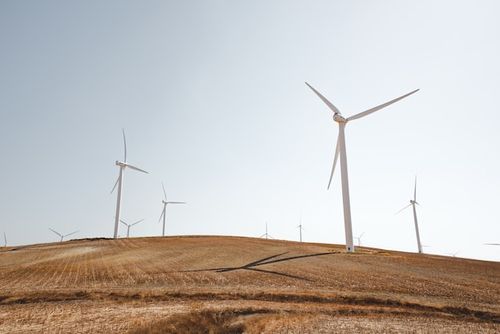
How are Renewable Energy Certificates (RECs) different from Carbon Credits
Both RECs and Carbon Credits in Singapore move towards a greener future, but they target emissions in different ways.
RECs (Renewable Energy Certificates): ☀️ Focus on electricity consumption.
Each REC represents 1 MWh of clean energy (solar, wind) fed into the grid.
Buying RECs doesn't directly reduce your emissions, but it supports renewable energy production.
Carbon Credits: Address overall emissions.
Each credit represents 1 tonne of CO2 emissions avoided or removed elsewhere.
Buying credits directly offsets your carbon footprint.
Think of it like this:
RECs: Buying a bike (supports clean transportation)
Carbon Credits: Planting trees to offset car emissions
Choosing the right option?
For electricity: RECs are a great fit!
For broader emissions: Consider Carbon Credits.
Both RECs and Carbon Credits are valuable tools for Singapore's green journey!
#Singapore #RenewableEnergy #CarbonCredits #Sustainability #GoingGreenpen_sparktunesharemore_vert
0 notes
Video
youtube
Blue Carbon - Ocean's Answer to Climate Change with Diana Denke | Nature...
#youtube#BlueCarbon#ClimateChange#carboncredits#biodiversitycredits#Mangroves#CarbonSequestration#OceanConservation
0 notes
Text
Explore the pivotal role of carbon credits in driving corporate sustainability and tackling climate change. Dive into our guide to master the strategic use and benefits of carbon credits for your business, and position your company as a leader in environmental responsibility.

Visit Netzero Incubator and Accelerator to read more about Navigating the Carbon Credit Landscape: An Executive's Handbook.
#carboncredits#sustainability#climatechangesolutions#environmentalresponsibility#jamesscottdcthinktank
0 notes
Text
Bold Action Needed: United Nations Conference Aims to Phase Out Fossil Fuels and Combat Climate Change #boldaction #businesses #carboncredits #cleanenergyprojects #comprehensiveagreement #cop28 #developednations #developingnations #droughts #Dubai #emissions #financing #floods #fossilfuels #globalwarming #internationalcooperation #investors #ParisAgreement #phaseoutfossilfuels #publicpressure #renewableenergysources #severeclimaterelateddisasters #transitiontorenewableenergy. #UnitedNationsClimateChangeConference #Wildfires
#Politics#boldaction#businesses#carboncredits#cleanenergyprojects#comprehensiveagreement#cop28#developednations#developingnations#droughts#Dubai#emissions#financing#floods#fossilfuels#globalwarming#internationalcooperation#investors#ParisAgreement#phaseoutfossilfuels#publicpressure#renewableenergysources#severeclimaterelateddisasters#transitiontorenewableenergy.#UnitedNationsClimateChangeConference#Wildfires
0 notes
Text
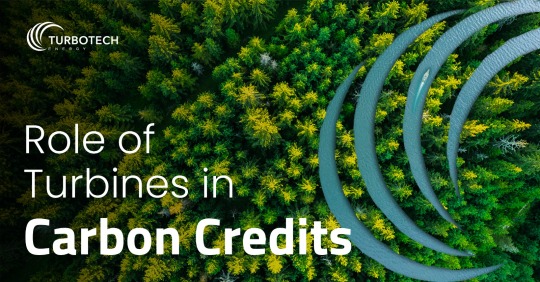
Indian industries recognize the importance of transitioning to renewable energy sources to reduce their carbon emissions. By embracing steam turbines, industries can lower their reliance on fossil fuels and achieve substantial carbon emission reductions.
Ongoing research and development efforts further enhance the performance and efficiency of turbines, making them more attractive for achieving carbon credits.
For more details visit our website
#sustainability#renewableenergy#steamturbines#carboncredits#carbonemissions#energyefficiency#indianindustries#cogeneration#wastetoenergy#CarbonReduction#carbonfootprint#powergeneration
0 notes
Video
youtube
From Polluter Pays to Carbon Credits: How Blockchain is Disrupting the T...
0 notes
Link
#bioplastics'#biotech#carboncredits#environment#Netneutral#nonpartisanship#offsetcarbonimpression#petrol#petrolbased#Sustainability#synthetic's
0 notes
Text
News Update 23 March 2023
It’s hard to evaluate this technology because a lot of the relevant information is redacted as confidential. But it sure looks to me like Chevron’s program to extract jet fuel from discarded plastic amounts to effectively burning the plastic and blanketing their neighbors with the resulting toxins. Calling it a “circular economy” project is a level of Newspeak that would make Orwell blush. https://www.propublica.org/article/chevron-pascagoula-pollution-future-cancer-risk
Washington state’s first carbon auction, held in February, raised about $300 million for climate-relevant community and infrastructure investments. The state sold more than 6 million allowances — each equal to one metric ton of carbon emissions — at $48.50 each. The price, substantially more than set by a similar program in California, likely reflects both Washington’s smaller size and the state’s more aggressive carbon reduction targets. https://crosscut.com/environment/2023/03/washingtons-first-carbon-auction-sold-pollution-300-million
If your electric vehicle’s range is less than anticipated, you might find yourself sitting by the side of the road. Certainly disruptive and annoying, but not as potentially catastrophic as an airplane running out of “fuel.” Startup Universal Hydrogen sees hydrogen-powered fuel cells as the best alternative to conventional jet engines. Obstacles range from reduced passenger capacity due to the size and weight of hydrogen tanks, to the lack of green hydrogen supplies. An early March test flight was, the company hopes, just the first step. https://www.seattletimes.com/business/boeing-aerospace/pioneering-moses-lake-flight-uses-hydrogen-to-power-regional-airplane
Solar installations require large open areas. So do farms. Often, rural communities see solar installations as a land-grabbing threat to agriculture. But in some climates, and for some crops, the two can combine to the benefit of both. https://www.pnas.org/doi/10.1073/pnas.2301355120
0 notes
Text
✨ Big Sky Country Beckons! 40 Acres in Presidio County, Texas ✨
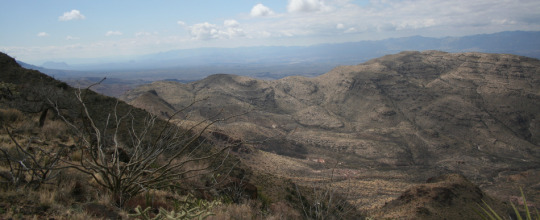
Embrace the Wild West!
This 40-acre parcel in rugged Presidio County offers boundless possibilities for adventure and self-sufficiency. A great addition to anyone's portfolio.


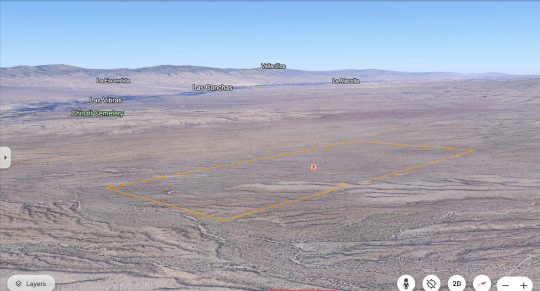

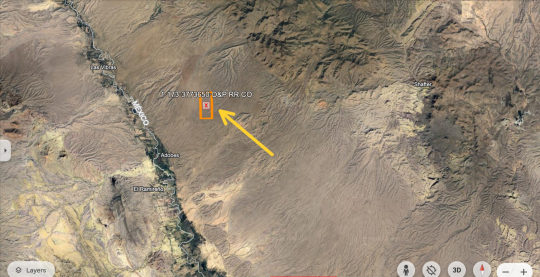

Imagine:
* Off-grid haven: Build your dream home, powered by the sun and the stars.
* Hunting paradise: Explore the vast Texas landscape and pursue your passion for the outdoors.
* Investment opportunity: Land banking, carbon credits, or even a future eco-tourism venture.
* Tiny home retreat: Create a community of like-minded individuals who value freedom and connection with nature.
Presidio County: Experience the magic of West Texas - breathtaking landscapes, stargazing under the clearest skies, and a unique cultural heritage.
$62,000 - Your Gateway to Adventure
Easy Payment Options:
* Apple Pay
* Bitcoin
* Cash App
* PayPal
* Square
* Stripe
* Zelle
Contact us today to schedule a viewing!
+1 619 318 – 6078 | [email protected]
Terms and Conditions:
* This property is sold "as-is."
* Buyer is responsible for conducting their own due diligence to ensure suitability for their needs.
* Total purchase price: $62,000.
* Down payment: $50.
* Monthly payments: $530 until paid in full.
* No interest financing and no documentation fees. Seller will handle paperwork and deed recording.
* Seller makes no guarantees regarding future property value increases.
* Buyer is responsible for verifying utility access and obtaining necessary permits for construction or development.
* No reselling without prior written consent.
0 notes
Text
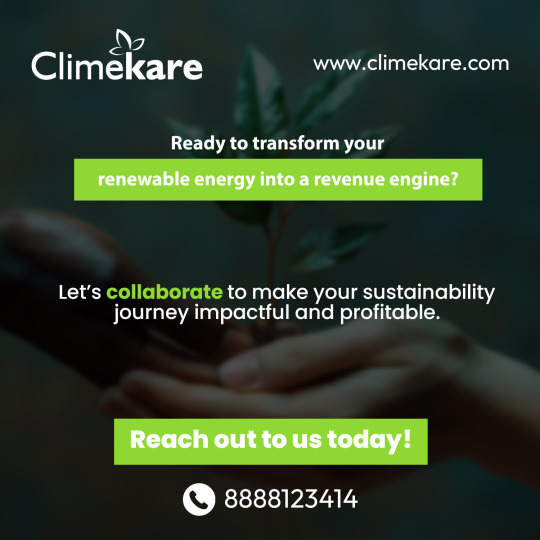







Whether you're a producer or a buyer, Climekare helps you unlock the full potential of green energy, boost your ESG credentials, and make a real impact.
Ready to monetize your sustainability?
Let’s make it happen!
.
.
.
#climekare#carbonfootprint#GreenFuture#IREC2024#renewableenergy#carboncredit#carbonimpact#environment#carbonneutral#sustainability#greenearth
0 notes
Text
#INNOVABILITA e #ITALIA2030 Meeting Nazionale Riserve di Biosfera MAB Unesco 2024
di Fabrizio Fantini, 18.10.24 custodito blockchain 130756d7d9ba9eaa477d9385b865f42a39da571628c2ffa0168830c095a6cf7 Dall’Italia all’Emilia per la quinta edizione del Meeting nazionale delle Riserve di Biosfera Mab Unesco che si svolge sino a domani 19 ottobre tra Parma e Reggio Emilia. E’ stata scelta la Riserva di Biosfera dell’Appennino tosco-emiliano comprensiva di 80 comuni tra Emilia,…
#CARBONCREDIT#COLLIEUGANEI#INNOVABILITA#ITALIA2030#BIOSFERA#INFOSFERA#NONABBIAMOUNALTROPIANETA#RENET0#UNESCO
0 notes